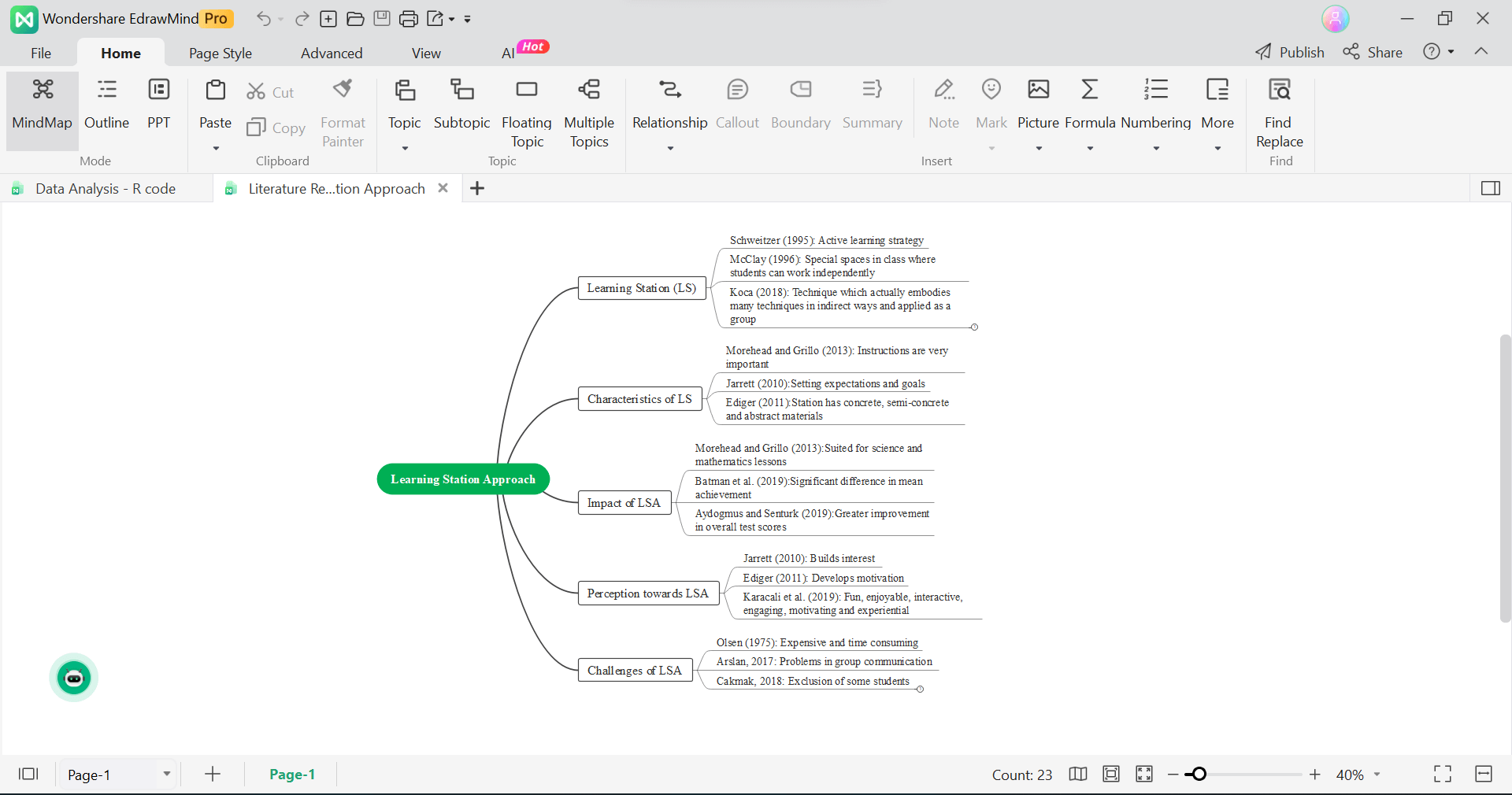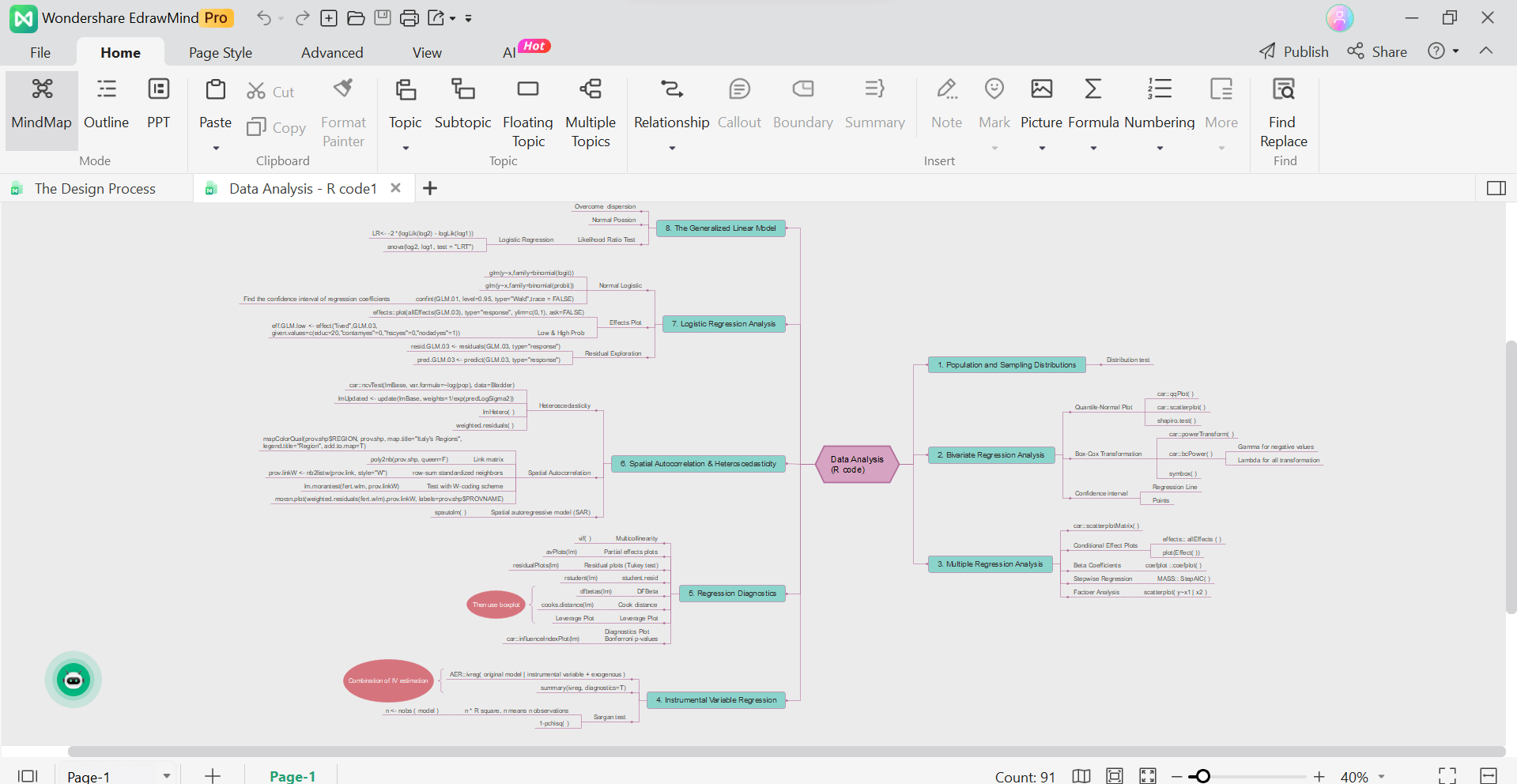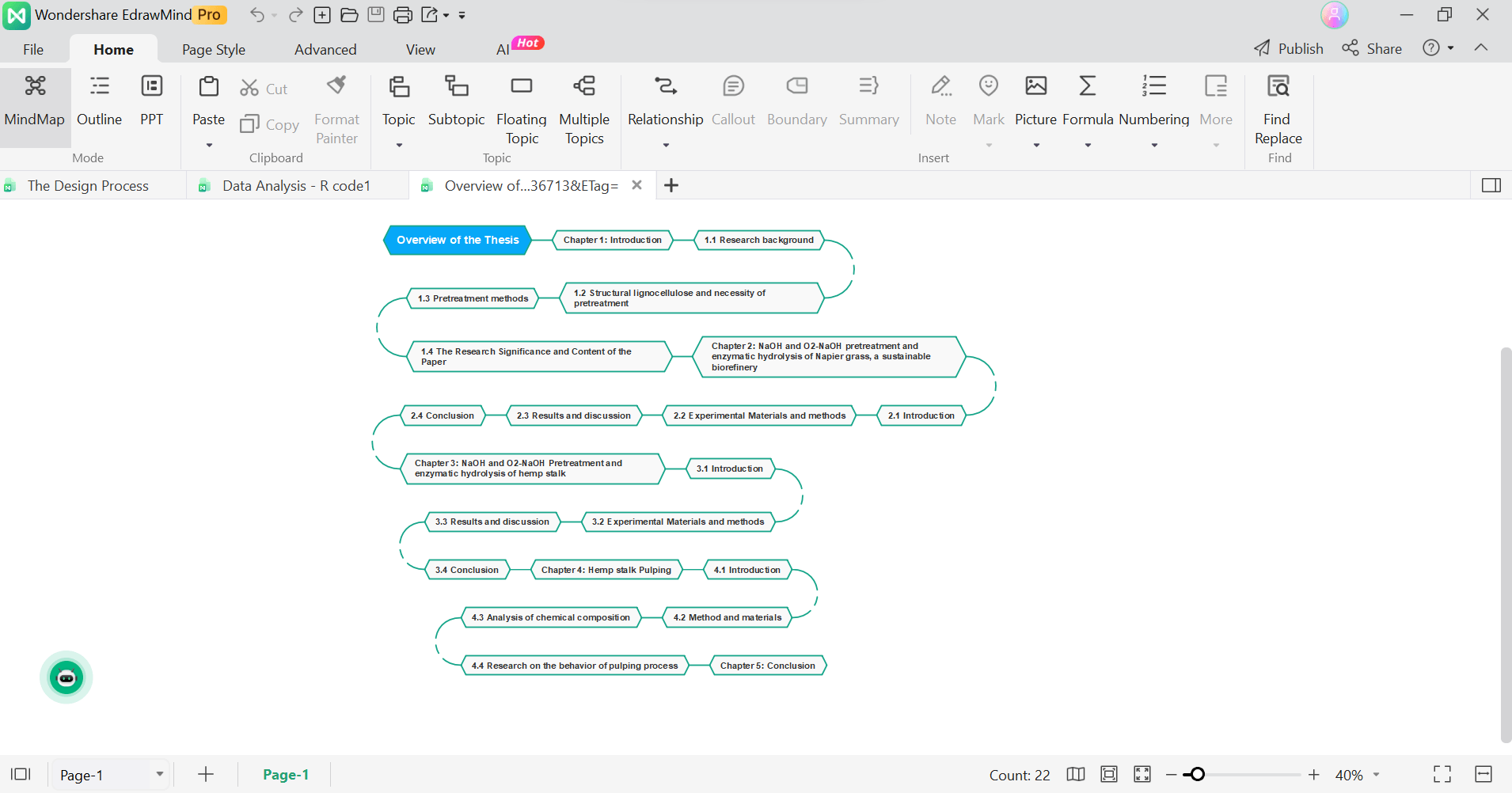Feeling overwhelmed by your research? You're not alone; we've all been there. Therefore, it is time to transform the way you approach the knowledge maze. Say hello to concept maps, your visual guides in the world of research.
A concept map is a visual representation that illustrates information, ideas, and concepts graphically. Concept maps are an effective tool for structuring and organizing information. They hierarchically display information, allowing for clear visualization of the relationships between concepts. These relationships are represented using lines or arrows, making it easier to trace and understand connections.
In this article, we are going to take a look at how researchers can use concept maps and how they can create ease in their research process.
Benefits Of Concept Maps
Concept maps play a crucial role in knowledge management and learning. They help us understand and remember complex information easily. Concept maps are very helpful for both teachers and students because they break down complicated information into short, easy-to-understand forms.
However, now business owners are also using concept maps to speed up the process of pitching ideas and analyzing products. It makes communication and decision-making easier. Take a look at the multiple benefits and purposes of concept maps.
- Analyzing Big Data
Concept maps are beneficial when dealing with large amounts of data. They simplify information by breaking it into smaller, easy-to-understand parts, helping us move from a general overview to more specific details.
- Incorporating New Information
Concept maps connect existing knowledge with new information, helping us seamlessly incorporate fresh insights into our mental framework.
- Enhancing Learning and Memory
Concept maps are not just tools, they also serve as effective memory boosters. By stimulating our visual and cognitive abilities, they improve our learning and memory retention.
- Metacognitive Enhancement Abilities
Concept mapping helps us learn and engage in metacognition. Metacognition enhances our critical thinking abilities, allowing us to address intricate problems effectively.
How Are Concept Maps Used In Research
Imagine yourself lost in the middle of a vast forest with no map and sense of direction. That is how conducting research without a concept map can make you feel. Just as a map guides the lost traveler with directions, a concept map can help researchers navigate through the overloaded information.
There are multiple ways a researcher can use a concept map to help them visualize complex topics more easily. Some of them are given below.
1. Organizing and structuring knowledge
A concept map provides a diagrammatic framework by organizing and structuring a massive amount of data and information on your research topic. A conceptual map can be used to collect ideas, theories, and practical results in a way that makes sure everything necessary is noticed.
By crafting a concept map, a researcher can easily navigate the relations between different concepts and sub-concepts. It can help them attain a better understanding of the data, stay aware of the maze of information, and keep their research on track.
2. Generating research questions
Generating well-informed research questions is a crucial step in any research publication process. A concept map provides excellent assistance in developing research questions. Researchers can identify knowledge gaps by drawing connections between relevant concepts. As they do so, a process of inquiry naturally unfolds, resulting in intriguing and relevant research questions.
It is like providing a bird's eye view of the topic, and this will guarantee that the questions you ask in your research are well-grounded in the current body of knowledge.
3. Planning and designing research studies
The reason behind successful research is carefully planned and designed outlines. Here comes the concept map to rescue; it helps the researchers to clearly define their goals, variables, and methods in research proposals. Diagramming the outline of the research helps the researchers improve their study design and simplifies the research topics.
4. Literature review and synthesis
An essential part of the research is the literature review. The concept map can help the researchers by crafting a diagrammatic summary of the literature, making the process easier. Researchers can get a whole overview of their topic of study by crafting maps that contain main theories, studies, and their relations.
The concept maps help in collecting different pieces of information together and also to find gaps in the existing literature. It serves as a valuable resource for researchers seeking to expand upon existing knowledge and acquire further insights. A concept map can provide readers with a brief overview of your literature review, offering a visually appealing break following extensive textual information.
5. Data analysis and interpretation
Concept maps provide a user-valuable approach to organizing and comprehending complex data analysis. They serve as an alternative to spreadsheets and charts, allowing researchers to showcase their data visually. These maps represent data points or variables as interconnected nodes, illustrating patterns and relationships through connecting lines. By utilizing labels, colors, and shapes to group data, researchers can easily identify trends and outliers.
Interactive concept maps offer the added benefit of enabling users to access information or explanations by clicking on specific data points. This feature enhances the understanding of the data by highlighting its difficulty. Moreover, adding a visual narrative within the concept map allows readers to easily understand the data journey right from its collection to interpretation.
6. Communication and dissemination
Concept maps help simplify and improve the communication and sharing of research findings. They simplify complex information into visually appealing representations for a broad audience. Researchers use concept maps to create graphical summaries of their results, aiding readers in understanding the main findings.
In a concept map, significant discoveries are represented as nodes connected by lines to related findings. Concept maps are versatile and can be used in various formats, such as presentations, reports, or interactive formats.
5 Research Concept Map Examples
A concept map is a flexible tool that has numerous purposes. Here are five examples of a concept map you can easily access through the Edrawmind map gallery, which might be helpful to the researcher.
1. Quantitative Research Concept Map
This concept map assists in hypothesis development, experimental design, and the creation of structured data analysis frameworks. It helps researchers visualize relationships between variables and statistical models.
You can use the above editable example for free. Navigate to the EdrawMind template gallery, edit this template, and make it your own in minutes.
2. Qualitative Research Concept Map
This concept map is a helpful tool in qualitative studies. It helps organize literature reviews, structure data analysis, and facilitate coding and theme development. By promoting clarity and rigor, concept maps enhance the research process.
3. Literature Review Concept Map
These types of concept maps are commonly used by researchers to visually organize and represent the current body of literature on a particular topic. Researchers can use such concept mapping to identify gaps in the literature and plan their studies.
4. Data Analysis Concept Map
These concept maps are utilized for the creation of data analysis frameworks. It helps researchers create a visual guide to effectively analyze and interpret research data by mapping the relationships between variables and data analysis techniques.
5. Research Project Concept Map
This concept map is a helpful tool for presenting a comprehensive overview of a research project. It aids researchers in creating a concise map that outlines the main objectives, methodologies, data sources, and expected outcomes of their research. Furthermore, this map helps to provide a clear understanding of the project's scope and goals.
Conclusion
A concept map is a valuable tool for organizing information in a way that enhances the performance of complex concepts for consumers. It is a multifaceted tool used in various fields like science, business, history, etc, and by multiple people, teachers, researchers, engineers, etc. It not only plays in simplifying complex information but also with memorization.
Suppose you are a researcher and want to make a concept map. You either create a messy one on paper or use a mind-mapping tool like EdrawMind. EdrawMind is an AI-powered mind-mapping tool that aims to make mind mapping very simple. It has useful features like AI Presentation, AI Video, One-Click Mind Mapping, and more.



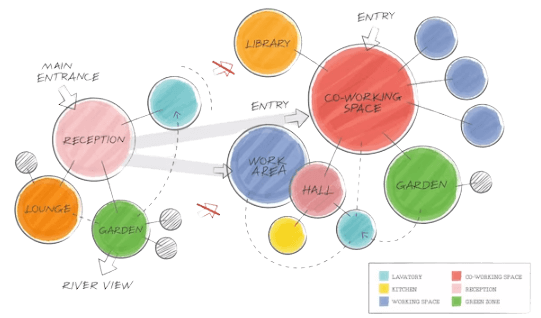
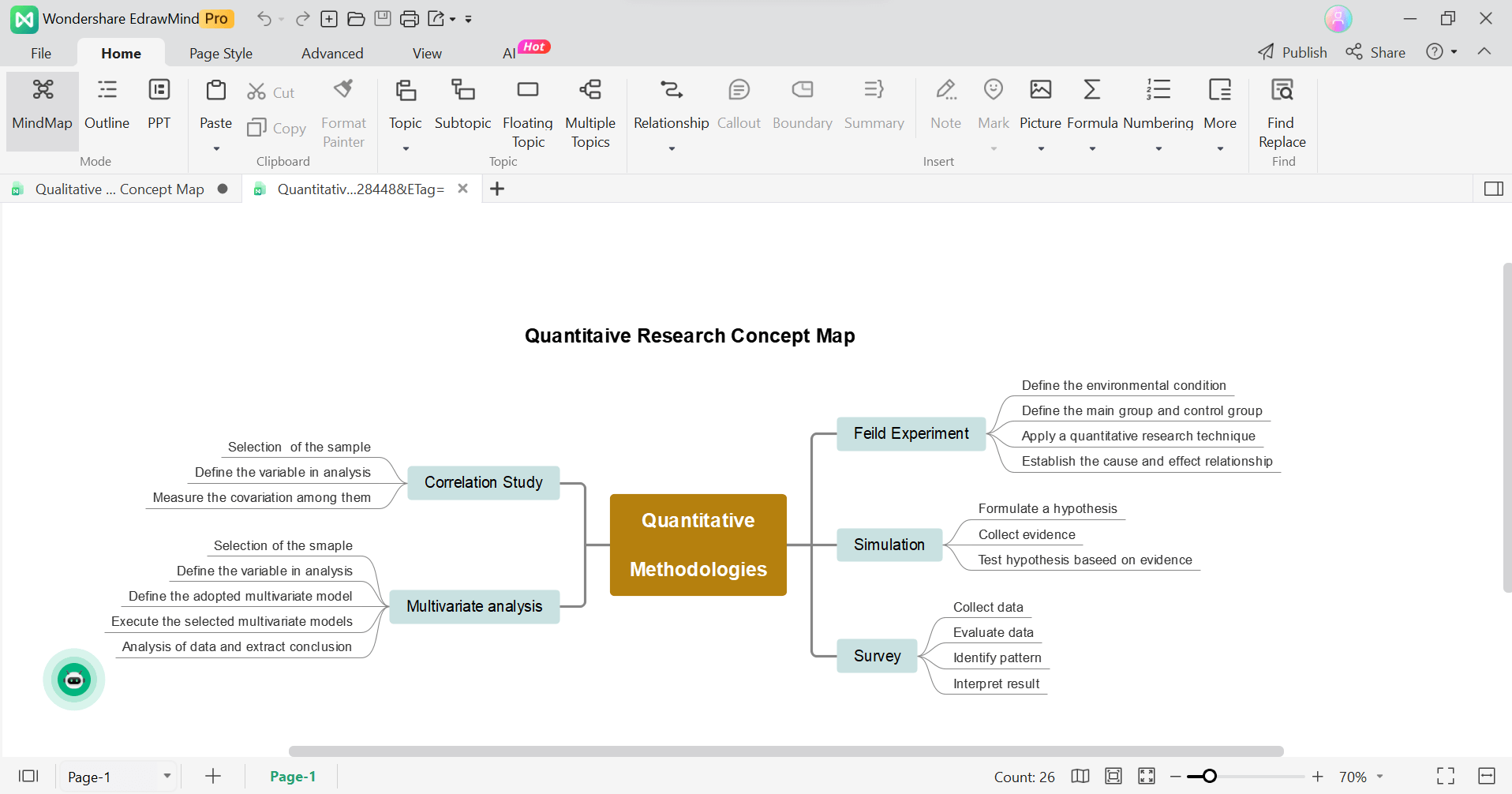
 below.
below.  below.
below. 
